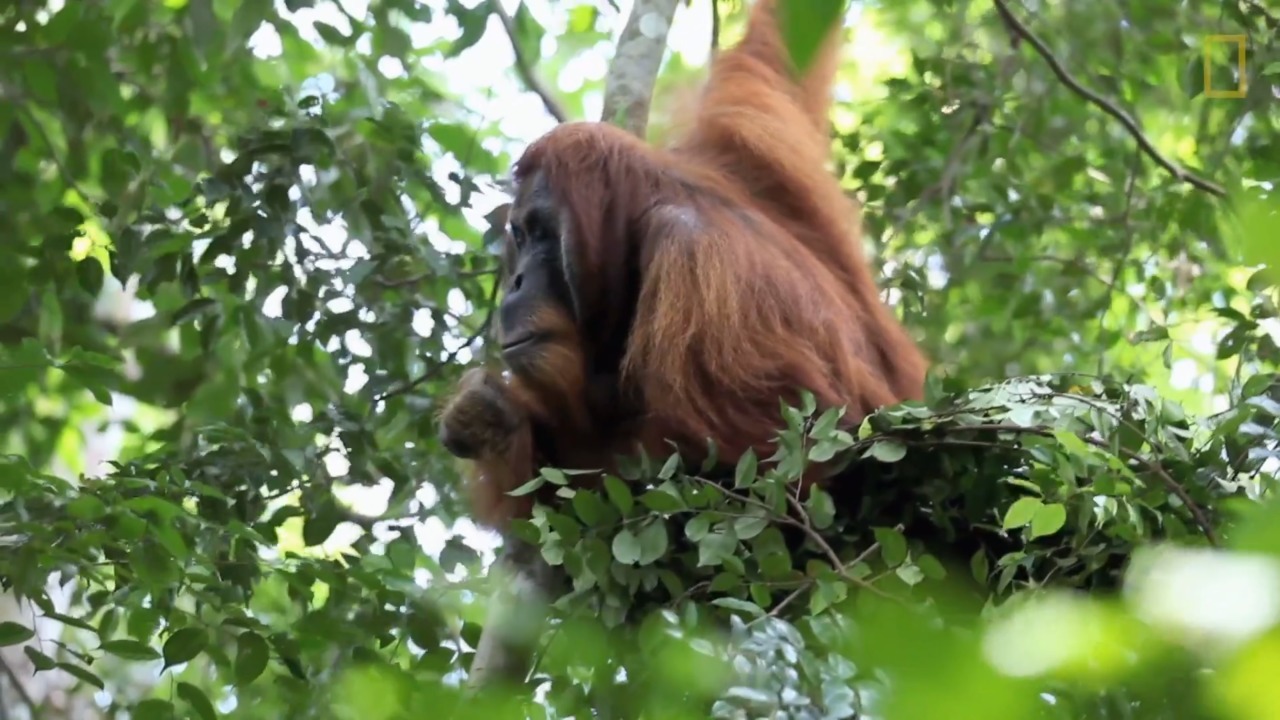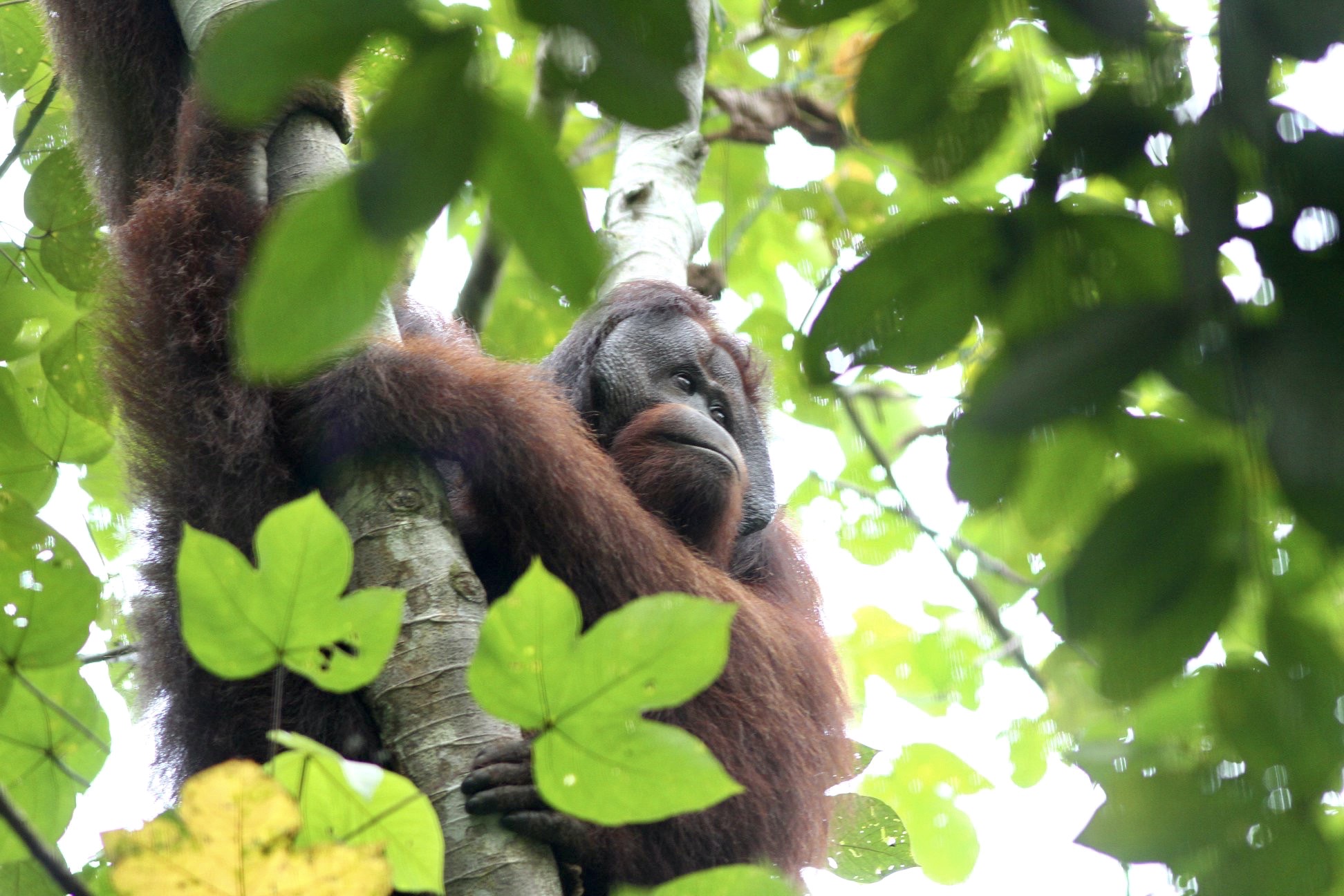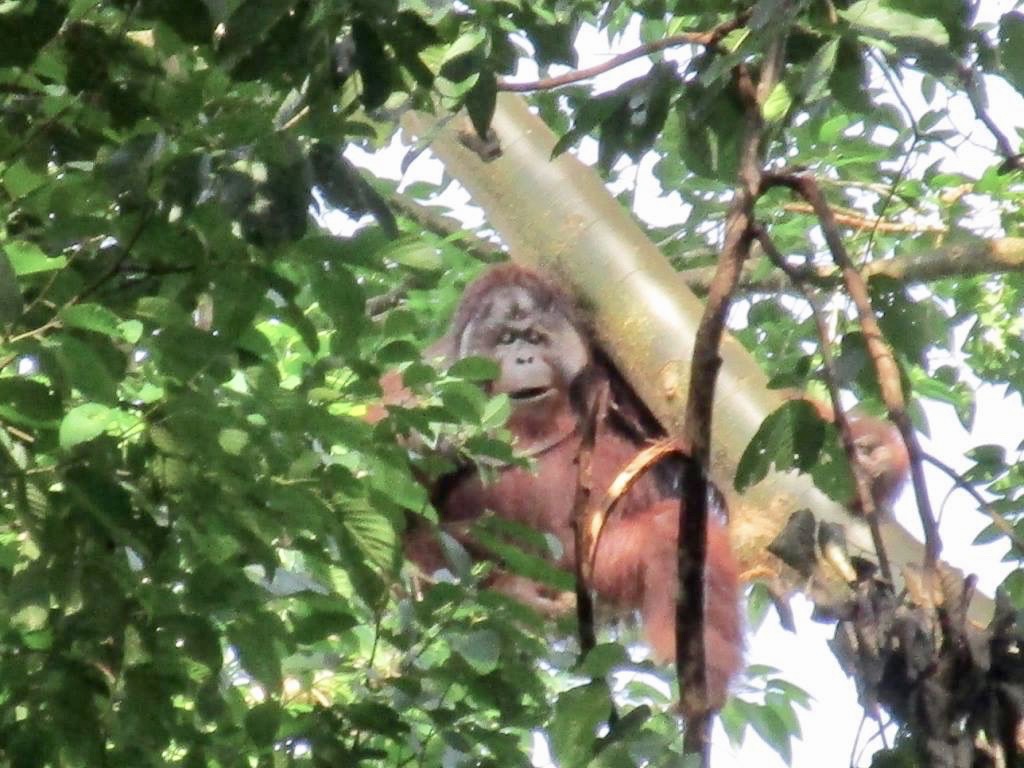
Orangutans, the majestic red-haired primates of Southeast Asia, captivate us with their intelligence, dexterity, and endearing personalities. Within this fascinating species, flanged orangutans stand out as a distinct subgroup, exhibiting unique traits and behaviors that set them apart from their unflanged counterparts. In this blog, we delve deep into the intriguing world of flanged orangutans, exploring their physical differences, social dynamics, and the reasons behind their prominent cheek pads.
What Are Flanged Orangutans?
Flanged orangutans are adult male orangutans characterized by the development of prominent cheek pads called flanges. These flanges, composed of fatty deposits, serve as secondary sexual characteristics indicating sexual maturity and dominance. Unlike unflanged males, flanged orangutans have larger bodies, longer hair, and a throat pouch that enhances the resonance of their calls, crucial for territorial defense and attracting mates.

Physical Differences: Flanged vs. Unflanged Orangutans
Cheek Flanges: The most striking difference is the presence of cheek flanges in adult male orangutans. Flanges give flanged males a wider, more mature appearance compared to the smoother faces of unflanged males.
Body Size and Structure: Flanged males are generally larger and more robust, with broader shoulders and a pronounced neck area. This size difference is a result of hormonal changes associated with sexual maturity.
Throat Pouch: Flanged males possess a throat pouch that expands during vocalizations, amplifying the volume and resonance of their calls. This feature is absent in unflanged males.
Hair Length: Flanged orangutans often have longer hair, especially around their necks and shoulders, contributing to their imposing presence and distinguishing them from unflanged individuals.
Social Dynamics and Behavior
Flanged orangutans play a crucial role in the social hierarchy of orangutan communities. Here’s a closer look at their behavior and interactions:
Dominance Displays: Flanged males use their size, flanges, and vocalizations to assert dominance and establish territories. They may engage in displays such as branch shaking, long calls, and physical confrontations with rival males.
Mating and Reproduction: During the mating season, flanged males have priority access to females. They compete fiercely for mating rights, often engaging in aggressive behaviors to fend off rival males and secure mating opportunities.
Mating between Flanged and Unflanged Orangutans: While flanged males typically dominate mating opportunities, there are instances where mating may occur between flanged and unflanged individuals. Female orangutans exhibit mate preferences based on various factors, and unflanged males may seize mating opportunities under certain circumstances, contributing to genetic diversity within orangutan populations.
Parental Care: While primarily solitary, flanged males may interact with females and offspring during mating. They may exhibit protective behaviors towards younger orangutans, ensuring their survival within the community.
Why Do Flanged Orangutans Have Prominent Cheeks?
The development of cheek flanges in orangutans is multifaceted and linked to several factors:
Sexual Selection: Female orangutans prefer mating with larger, more dominant males. Cheek flanges serve as visual cues of strength and maturity, influencing female mate choice and reproductive success.
Social Status: Cheek flanges help establish and maintain dominance within the orangutan community. Flanged males use these features during territorial displays and interactions with other males, signaling their status and deterring potential challengers.
Hormonal Influence: The growth of cheek flanges is influenced by hormonal changes associated with sexual maturity. As males reach adulthood, hormone levels fluctuate, leading to the development of secondary sexual characteristics like flanges and throat pouches.
In conclusion, flanged orangutans represent a fascinating aspect of orangutan biology and behavior. Their distinctive physical features, social dynamics, and the evolutionary significance of cheek flanges provide valuable insights into the complexity of primate societies. By understanding and appreciating these unique traits, we gain a deeper appreciation for the diversity and intricacies of our natural world.

